Best Kitesurfing Spots in Costa Rica
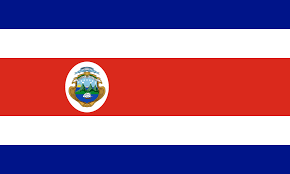
If you’re chasing the thrill of the wind with a board beneath your feet and tropical swells around you, then exploring the Best Kitesurfing Spots in Costa Rica is your ticket to paradise. From the legendary flat‑water playgrounds of Bahia Salinas and Playa Copal to the jaw‑dropping volcano‑crowned Lake Arenal, and even the Caribbean’s wave‑rich shores—this Central American gem has it all.
In this guide, we’ll peel back the layers on when to go (hint: November through April brings stellar wind), where to stay (from kite houses to eco‑resorts), and which spots fit your skill level. We’ll walk you through wind stats, gear essentials, schools, safety advice, local culture, and even bonus adventures like surfing and yoga. Plus, you’ll get pro insights and comparisons you won’t find elsewhere. So whether you’re a seasoned charger or eager learner, tighten your harness—your Costa Rican kitesurf escape starts here.
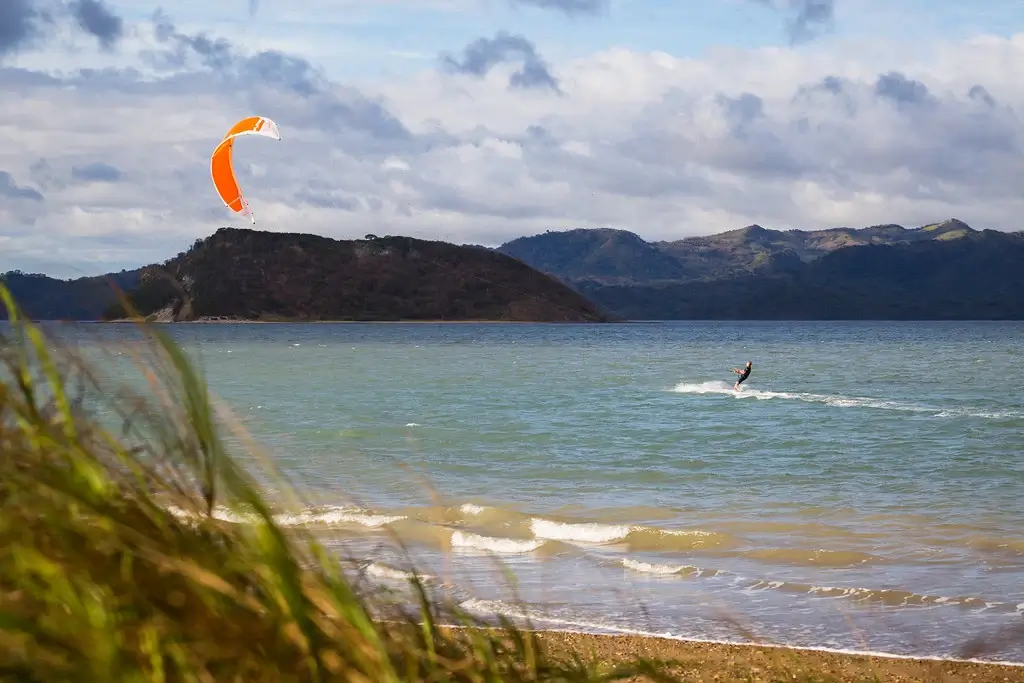
🏄♂️ Bahia Salinas (Playa Copal)
Located in the far northwest of Costa Rica, near the Nicaraguan border, Bahia Salinas—and specifically Playa Copal—stands out as one of the world’s top kitesurfing destinations. Known for consistently windy conditions and ultra-flat water, it’s ideal for both beginners and seasoned kiters.bluedreamhotel.com+15en.wikipedia.org+15unplug-kitesurf.com+15
Wind & Water Conditions
- Season: Reliable thermal winds blow from November through May, with March and April often being peak months.kiteboardingcostarica.com
- Speed: Winds average between 17–23 knots (20–25 mph), sometimes surging to 30–40 knots—perfect for adrenaline seekers.
- Direction & Terrain: Side‑onshore winds sweep across the bay, shaped by Nicaragua’s thermal breeze funneled through mountain gaps—ideal for safe on‑water progression.unplug-kitesurf.com+1costakite.com+1
- Water: The bay’s geography (a tiny island/outcropping) creates calm water conditions—flat with light chop—excellent for learners.costakite.com+2en.wikipedia.org+2tripadvisor.com+2
Who It’s For
- Beginners find Playa Copal sweet-spot: manageable flat water, consistent winds, and few crowds—usually just 10–15 kiters on the water.ft.com+13costakite.com+13beyondthorizon.com+13
- Intermediate/Advanced kiters can carve hard, hit small jumps, and challenge gusty sets using predominantly 6 – 8 m kites.costakite.com+15unplug-kitesurf.com+15kiteguide.com+15
- With up to 300 wind days a year, it’s a training ground for year-round skills.ticokite.com+1bluedreamhotel.com+1
Local Amenities & Schools
- Kiteboarding Costa Rica (KBR): A leading center based right on the beach, open November–May. Lessons start at $55/hr, gear rentals $65–80/day, and accommodations available.beyondthorizon.com+2kiteboardingcostarica.com+2bluedreamhotel.com+2
- Tico Kite School: Run by local pro Rachid Pardo—personalized coaching in English/Spanish. Over 300 wind days a year.ticokite.com
- Blue Dream School: Praised on TripAdvisor for great intro experiences at Playa Copal.costakite.com+12tripadvisor.com+12unplug-kitesurf.com+12
Unique Insights & Practical Tips
- Mountain Venturi Effect: Wind from Lake Nicaragua rolls over the Cordillera and funnels into Salinas Bay—expect “gust sets” rather than random bursts; reading water movement helps you anticipate power surges.ft.com
- Gear Strategy: Locals suggest sticking with 6–7 m kites; bigger kites rarely used. Short bar setups help manage gusty, sweeping wind rather than aggressive bursts.kiteguide.com+3unplug-kitesurf.com+3whenwherekite.com+3
- Wildlife and Warmth: Water remains around 22–28 °C, so no wetsuit needed—just a rash guard can go a long way. Onshore, it’s common to spot turtles, dolphins, pelicans, and even whales off-season.costakite.com+1costakite.com+1
What Sets Bahia Salinas Apart
- Unmatched consistency: “Only 4 calm days in six months”—virtually guarantees wind!costakite.com
- Safe, flat learning zone: Protected bay with shallow depth, minimal waves, and a friendly local kiters community.costakite.com
- Rich in culture & convenience: Easy access (Liberia airport ~1 hr away), combined with local lodging, beachside vibe, and gear services.ft.com+3kiteboardingcostarica.com+3costakite.com+3
In short, Bahia Salinas is not just Costa Rica’s kite capital—it’s a globally consistent, beginner-friendly wind oasis with unique thermal dynamics and a snug community feel. Whether you’re starting out or perfecting your kiteloops, this is the place to be.
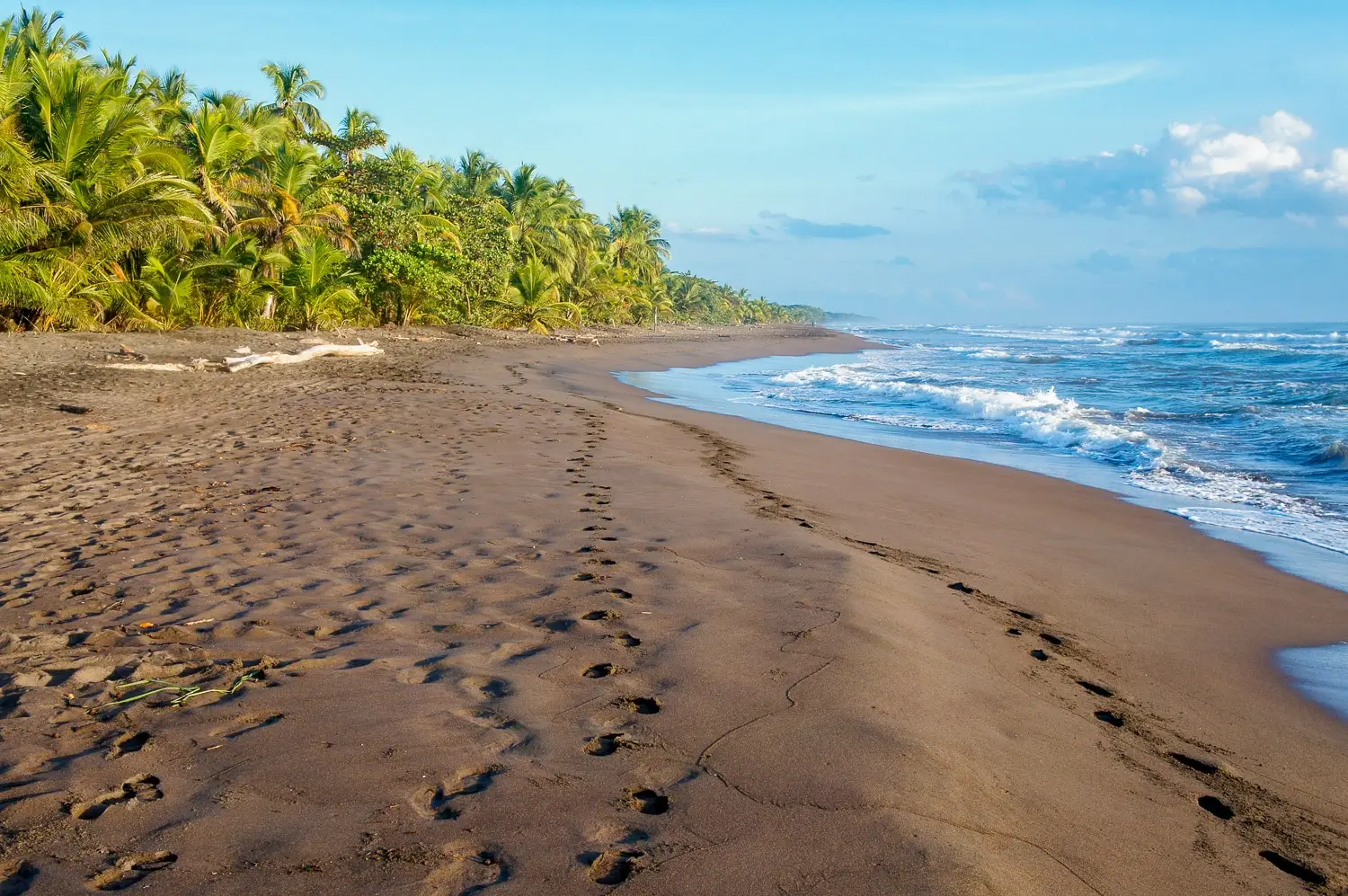
🏄♂️ Gulf of Papagayo
Just south of Bahia Salinas lies the expansive Gulf of Papagayo, a scenic and surprisingly reliable kitesurfing region. While it doesn’t enjoy the same international fame as Playa Copal, this area offers steady wind conditions, jaw-dropping views, and convenient access to all-inclusive resorts and Liberia Airport—making it a great option for travelers who want a more comfortable, balanced kite trip.
Wind & Conditions Overview
- Season: Like Bahia Salinas, the wind season runs from November to April, with January and February being peak months.
- Wind Speeds: Average 15–22 knots, slightly lighter than Playa Copal but still consistent for medium-size kites.
- Wind Direction: Side-onshore with some thermal acceleration around Playa Panamá and Playa Hermosa.
- Water State: Mild chop with occasional small waves—great for intermediates and progressing riders.
🌬️ Pro Insight: The Papagayo winds are created by the same mountain gap between Lake Nicaragua and the Pacific, but they’re gentler and more forgiving—especially later in the day.
Best Launch Spots
- Playa Panamá: One of the smoothest and safest launches in the area. Long sandy beach with space to rig and land.
- Playa Hermosa: Less crowded, stunning scenery, slightly gustier winds.
- Playa del Coco: Popular tourist base; good for downwinders and post-kite nightlife.
- Playa Buena (lesser known): Great for foil boarding thanks to calm surface and depth.
Who Should Kite Here?
- Intermediate Kiters: Those looking to improve transitions, upwind technique, or learn small jumps in moderate conditions.
- Vacationing Families: You can kite a few hours, then relax at an all-inclusive beach resort with your crew.
- Foilers: Excellent wind angle and calmer water make this a solid foilboarding region.
Local Kite Schools & Rentals
- Rocket Frog Divers / Kiteboarding Papagayo: Offers basic lessons, SUP rentals, and foil lessons in Playa Hermosa.
- Playa Panamá Kite School: Local outfit with private coaching, gear for rent, and bilingual instructors.
- Rentals average around $70–100/day, depending on kite size and package (board, harness, vest).
Unique Insights
- Accessibility: Gulf of Papagayo is only 30–40 minutes from Liberia International Airport, making it the most accessible kite destination in the country.
- Wind Forecasting Tip: Use iKitesurf’s Bahia Salinas Station, then subtract ~2–3 knots for Papagayo’s forecast.
- Crowd Factor: Unlike Bahia Salinas, Papagayo beaches are less crowded with kiters, making it perfect for solo sessions or less hectic conditions.
What Makes Gulf of Papagayo Special
- Resort convenience: Stay at a 4-star hotel, walk to the beach, and launch within minutes.
- Balanced conditions: Not as powerful as Bahia Salinas—ideal for learning new tricks or relaxing rides.
- Tourist extras: Post-kite spa, cocktails, zip-lining, or beach hikes—all within minutes.
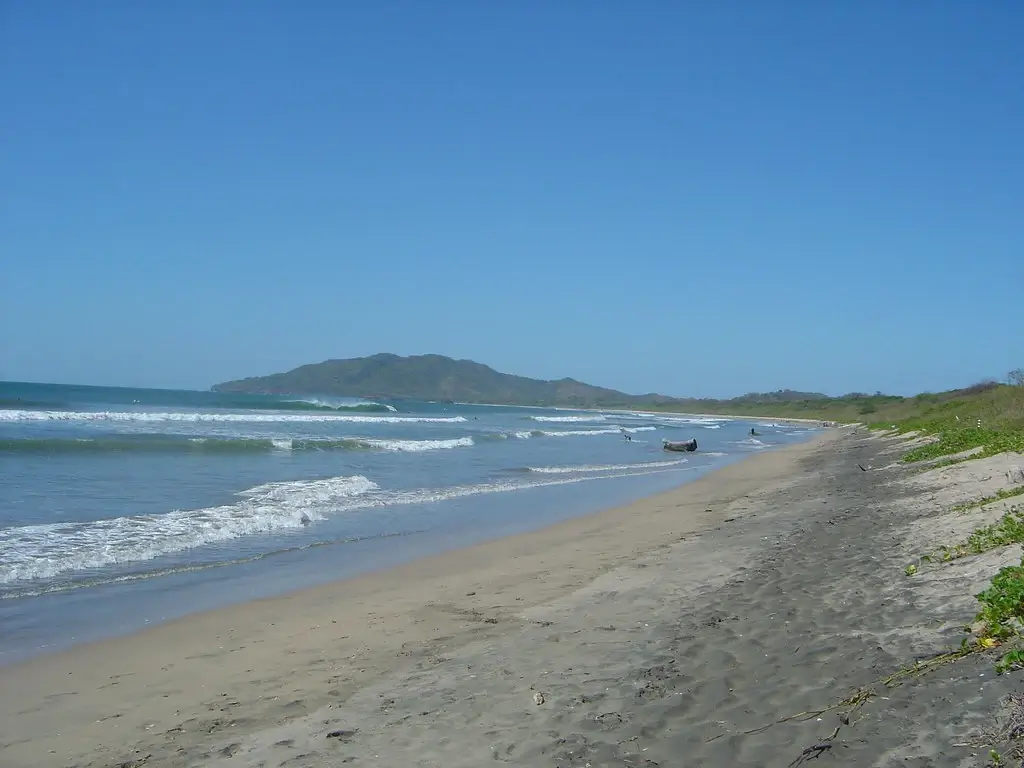
🏄♂️ Playa Verde, Tamarindo & Playa Grande
While Costa Rica is famed for its pristine beaches and top-tier surf, some western spots offer the rare combination of wave riding and wind power — ideal for kiters who want to mix surf-style riding with downwinders and freestyle. In the central-northern Pacific, Tamarindo, Playa Grande, and the lesser-known Playa Verde present an exciting playground for the more experienced and adventure-hungry kiter.
The Setup: Where the Ocean Brings the Action
Tamarindo is often considered the party capital and surf town of Costa Rica, but when the Papagayo winds extend south, it transforms into a solid kiteboarding destination during the dry season.
- Season: Peak wind months are December to March, with occasional windy spells in November and April.
- Wind Speeds: Ranges between 12–18 knots, often picking up mid-afternoon.
- Wind Direction: Generally side-onshore with occasional side-shore depending on the local terrain and swell.
- Waves: Medium beach breaks, ideal for strapless surfboard kiting and downwind wave rides.
Pro Tip: When kiting here, you’ll want to ride a surfboard or directional board with foot straps for stability and carving power.
Spot Breakdown
Playa Grande
- Just north of Tamarindo across the estuary.
- Known for powerful surf, moderate wind, and less beach traffic.
- Best for advanced riders or those with strong upwind skills.
- Home to leatherback turtle nesting—watch for conservation zones.
Playa Tamarindo
- Offers beginner-friendly surf breaks, and is ideal for light-wind sessions or kiting between surf sets.
- Conditions vary daily — check tides, wind forecasts, and local surf flags.
- Kite launch is limited; best done during low tide when the beach is wider.
Playa Verde (Local Secret)
- A more hidden bay south of Tamarindo, receives clean side-onshore winds in mid-afternoon.
- Flat-to-mild chop in the inner bay, with surfable waves outside the reef.
- Access is rough but worth it — fewer people, more space.
Who It’s For
- Advanced kiters and directional board riders.
- Freeriders looking to combine surf and kite in one trip.
- Digital nomads: Tamarindo has coworking cafes, beach wifi, and expat-friendly vibes.
Rentals, Lessons & Local Tips
- Tamarindo Kite and Seakret Kiteboarding offer surf-kite lessons, rentals (~$60/day), and guided downwinders.
- Some surf schools now partner with kite outfits, offering combo packages.
- Best to bring larger kites (10–12m) as winds here are lighter and wave-focused.
Unique Insight: Surf + Kite = The Ultimate Crossover
Few destinations offer the chance to ride breaking waves by surfboard in the morning, then catch wind and carve in the afternoon. This stretch of coast is for riders who don’t need perfect kite conditions but thrive in hybrid environments.
“If you want to kitesurf with a surf soul, this is where you go.”
Bonus: Post-Session Lifestyle
- Sunset bars and surf cafes dot Tamarindo’s main drag.
- Options for yoga, acai bowls, and chill post-kite beers.
- Nightlife is very active — plan your early morning sessions accordingly!
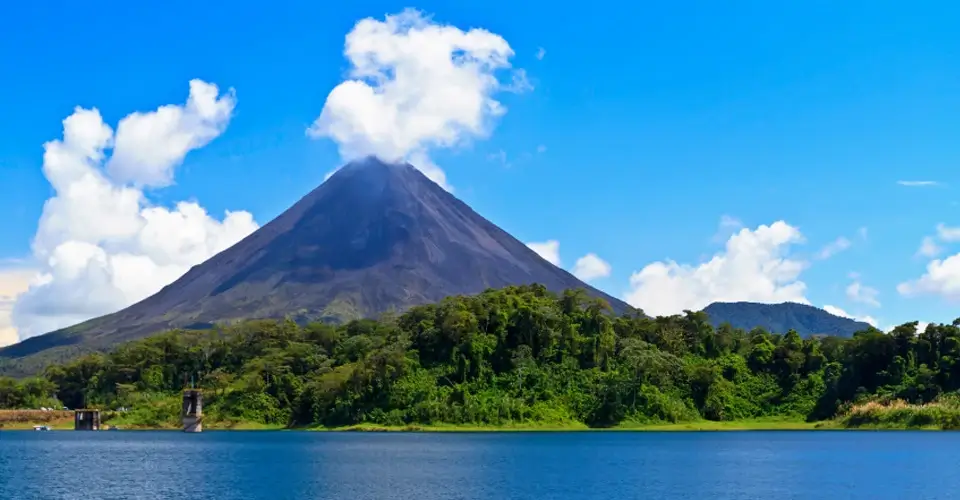
🏄♂️ Lake Arenal
While most kitesurfers picture oceanfront beaches when they think of Costa Rica, Lake Arenal flips the script. Nestled in the northern highlands near Arenal Volcano, this massive freshwater lake delivers some of the country’s strongest, most consistent wind—perfect for adventurous kiters seeking a truly different experience.
Overview: Why Lake Arenal Stands Out
- Altitude: 546 meters (1,790 ft) above sea level—cooler climate and stunning mountain scenery.
- Season: Best winds from December to March, though wind can last through early May.
- Wind Speeds: 20–35 knots, often stronger than coastal spots.
- Water Type: Freshwater with chop and small rolling swells (no salt, no sharks!).
Wind & Water Conditions
- Wind Direction: Side-onshore from the northeast, funneled between the Cordillera de Tilarán mountains.
- Gust Factor: Due to terrain, expect powerful gusts—ideal for experienced kiters but challenging for beginners.
- Water Temp: ~22–24°C; a shorty wetsuit is recommended for longer sessions.
Who Should Kite Lake Arenal?
- Intermediate to Advanced Riders: Perfect for boosting big air and tackling gusty, powerful wind.
- Freeriders & Big Air Addicts: Consistent wind lets you ride smaller kites (5–8m) and launch huge jumps.
- Adventurous Travelers: If you want a completely different vibe from beach kiting.
“Arenal is like the Tarifa of Central America—strong wind, laid-back towns, and a loyal kite community.”
Main Launch Spot: Tico Wind
- Located on the northeast shore of Lake Arenal.
- Features grassy launch pads, gear rentals, rescue boat, and cabins for rent.
- Offers day passes, instruction, and long-term stays for wind nomads.
- Also hosts windfoil and wingfoil sessions.
Local Schools & Services
- Tico Wind: Established in 1992, it’s the go-to provider for gear, coaching, and community events.
- Rentals: ~$60/day
- Private lesson (2 hr): ~$120
- Volcano Kitesurf (Pop-up): Offers guided kite-tours with boat support for advanced riders.
Unique Insights
- No crowds: Lake Arenal is still relatively undiscovered by the global kite scene. Most days, you’ll share the lake with 5–10 riders max.
- No beach start: You launch from grassy areas or via assisted boat drop-offs—unique and fun!
- Post-kite perks: Hot springs, volcano hikes, jungle canopy tours, and thermal spas.
“Where else can you launch a 7m in gusting 35 knots, then soak in a hot spring beneath a volcano an hour later?”
Considerations
- Gusty winds: Be prepared—this is not an ideal beginner spot unless conditions are mellow.
- Bring your own: While rentals exist, seasoned kiters may prefer their own gear for such dynamic wind shifts.
- Stay warm: While not cold, higher elevation means wind chill—bring a hoodie and a shorty wetsuit.
Lake Arenal is Costa Rica’s hidden gem for thrill-seeking kitesurfers. From jaw-dropping backdrops to adrenaline-pumping wind, it offers a completely different kind of kite adventure—raw, powerful, and unforgettable.
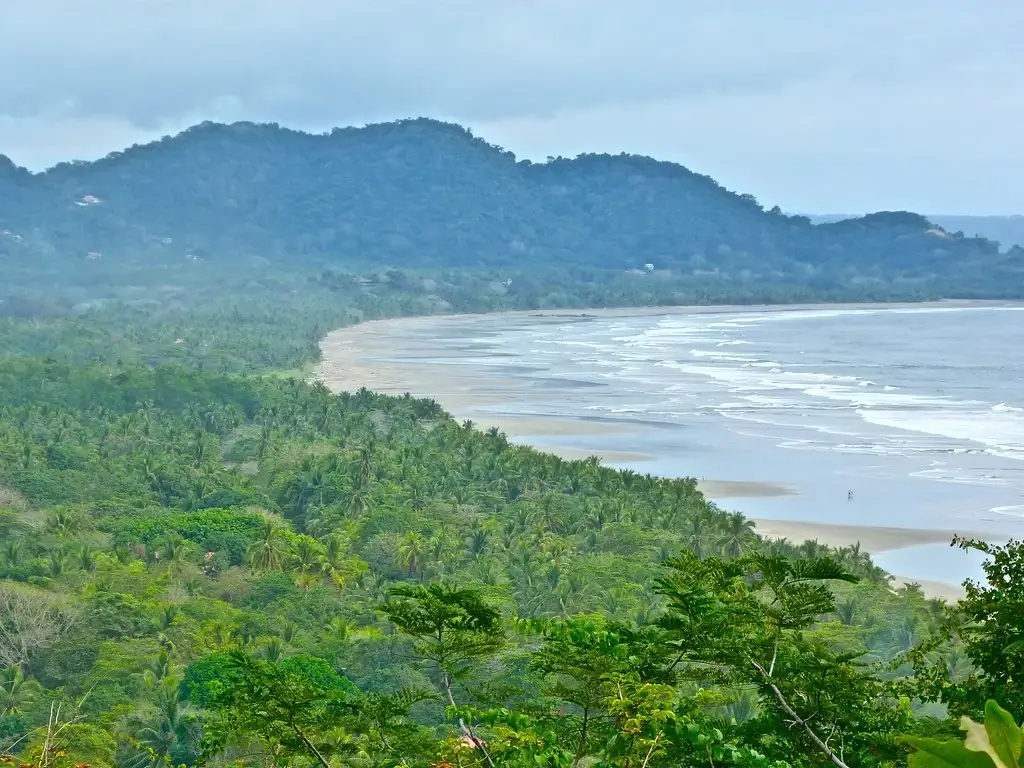
🏄♂️ Nicoya Peninsula
The Nicoya Peninsula is best known for its world-class surf, yoga retreats, and laid-back lifestyle — but in the right season, it transforms into a wild west of wind for adventurous kitesurfers. The spots around Santa Teresa, Playa Carmen, and Mal País offer open beach launches, waves, and thermal winds that appeal to strapless riders and freeriders with a taste for nature and exploration.
Wind & Conditions
- Season: Mid-December to March is the windiest, with occasional bonus days in early April.
- Wind Strength: Averages 12–20 knots, generally lighter than the north coast but boosted by thermal effects.
- Direction: Predominantly side-onshore; clean and consistent when conditions align.
- Water Conditions: Small to medium beach break waves, ideal for strapless directional boards.
Best Launch Spots
Playa Santa Teresa
- Open beach break with a wide sandy area at low tide.
- Reliable afternoon thermals on sunny, dry days.
- Better for intermediate to advanced riders due to wave + chop combo.
Playa Carmen
- More sheltered and slightly calmer, making it a more forgiving launch.
- Great for downwinders toward Playa Hermosa or wild beach exploration.
Mal País
- Rugged, remote, and wind-dependent — worth checking when forecast aligns.
- Stunning scenery, but be cautious of rocks and rips.
Tip: Watch for surf schools on the beach. Kite early (11–2pm) or late (after 4pm) to avoid traffic.
Who It’s For
- Wave kiters: Strapless surfboard riders will love the consistent breaks and smooth wind transitions.
- Intermediate explorers: With moderate winds and wide beaches, it’s ideal for freestyle and transition practice.
- Surf/kite nomads: Combine early surf sessions with afternoon kite rides.
Lessons, Rentals & Community
- Del Soul Surf & Kite: Offers surf-kite hybrid camps, foil lessons, and rentals.
- Kite Mal País: Boutique school with certified instructors and customized downwinder trips.
- Average rental cost: ~$65–$85/day (board + kite + harness)
LSI keyword used: “kite surf yoga retreats Costa Rica”
Unique Insights
- Downwind Adventures: This coast is a dream for kiters who love long scenic downwinders. Try Santa Teresa to Playa Manzanillo for a 12 km run.
- Surf & Kite Crossover: Catch waves on a shortboard in the morning, then kite them in the afternoon on a directional.
- Post-Kite Vibes: The area is packed with healthy food cafés, live music bars, and eco-boutique stays.
Challenges to Consider
- Limited rescue options: No formal boat support — ride with a buddy or stay close to shore.
- Tide matters: High tide can reduce beach space dramatically, especially at Playa Santa Teresa.
- Variable wind: While generally reliable, thermals depend on sunshine — cloudy days can kill wind.
Summary: Why Choose Nicoya?
- Wild nature, waves, and wind — a paradise for kiters who also surf, stretch, and chill.
- Far from the crowds, with a community vibe that welcomes creativity and freedom.
- Best for intermediate+ riders comfortable with open beach launches and surf influence.
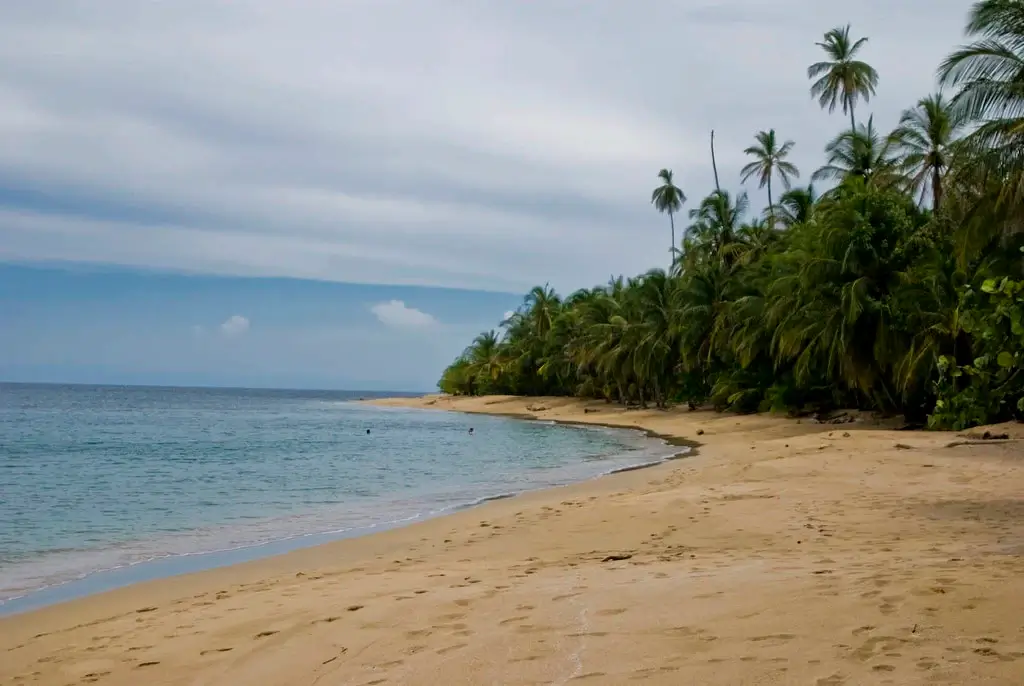
🏄♂️ Caribbean Coast: Punta Uva & Puerto Viejo
While the Pacific side gets most of the kiteboarding attention, Costa Rica’s Caribbean Coast is a well-kept secret with stunning beaches, lush jungle backdrops, and occasional windows of perfect kite conditions. The area around Puerto Viejo, Playa Cocles, and Punta Uva offers seasonal trade winds, warm water, and a totally different cultural experience — think Afro-Caribbean rhythms, chocolate tours, and reggae nights after your session.
Wind & Weather Overview
- Wind Season: Best from late December to early March, with smaller wind windows in July and October due to Caribbean trade winds.
- Wind Speeds: Average 12–18 knots, sometimes peaking at 20–22 on clear days.
- Wind Direction: Generally side-onshore with smooth delivery on exposed beaches.
- Water Conditions: Warm Caribbean water, small surf breaks, and calm bays.
Best Launch Areas
Punta Uva
- A stunning horseshoe-shaped bay surrounded by tropical jungle.
- Ideal for freeride sessions, SUP, or foilboarding in lighter wind.
- Clear, shallow water — perfect for mellow, scenic rides.
Playa Cocles
- A more exposed beach with consistent surf.
- Good for strapless riders and wave-kiters looking for cross-discipline action.
- Limited rigging space — best suited for experienced kiters.
Puerto Viejo (townside)
- Not typically a launch spot, but great for exploring and accessing nearby kite-friendly beaches.
- Best as a basecamp with access to rentals, cafes, and nightlife.
Who Will Love It Here?
- Adventure-seeking kitesurfers who like to explore under-the-radar destinations.
- Freeriders and foilboarders who can make the most of light-moderate wind.
- Travelers looking for culture: Afro-Caribbean food, music, and nature blend beautifully here.
Local Kite Services
- Kite Caribe: A small outfit in Playa Chiquita offering kite safaris and guided rides.
- Puerto Viejo Watersports: SUP, kite, and surf gear available — call ahead to reserve.
- DIY-Friendly: This is a place where independent riders thrive; bring your own gear if possible.
Unique Perspectives
- Totally different vibe: From the music to the food to the architecture, Puerto Viejo feels like a new country within Costa Rica.
- Wildlife-rich rides: Don’t be surprised to see howler monkeys in the trees and sloths in the canopy after your session.
- Dual-sport potential: Combine kitesurfing with snorkeling, jungle hikes, or cacao plantation tours.
Things to Know
- Wind is less reliable: You may only get 2–4 kitable days per week — it’s a spot for slow travel, not wind junkies.
- Bring big gear: 12m+ kites are often necessary unless you’re foiling.
- No rescue support: Kite conservatively, especially if you’re unfamiliar with the reef breaks.
Why Try the Caribbean?
- Unspoiled nature: Turquoise water, palm-lined beaches, and a backdrop of lush rainforest.
- Truly off the beaten path: Very few kiters, plenty of space.
- Cultural immersion: Afro-Caribbean Costa Rica offers food, music, and local flavor you won’t get on the Pacific side.
“Kiting here is more about flow than freestyle — slow mornings, warm water, and tropical vibes.”
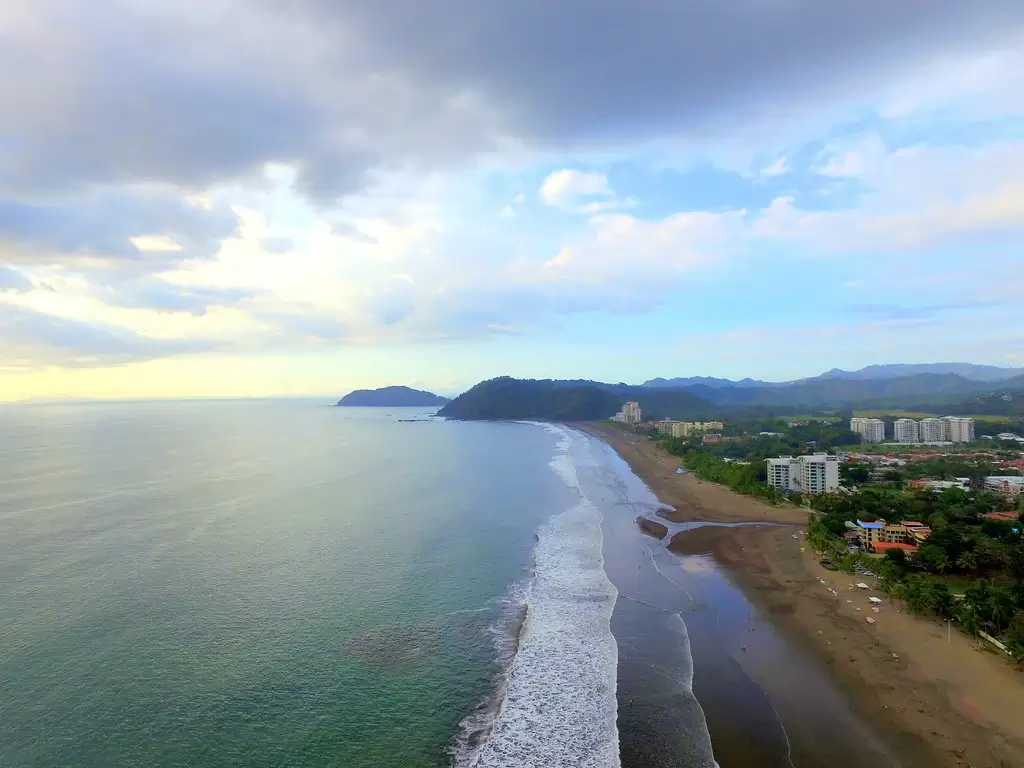
🏄♂️ Jaco & Central Pacific
The Central Pacific coast of Costa Rica is best known for its surf-heavy beaches, lively expat scene, and accessibility from San José. While not traditionally a kitesurf mecca like Bahía Salinas, the area around Jaco, Esterillos, and Playa Hermosa offers occasional wind windows for beginner and casual kiters—especially in the early dry season.
Overview: What to Expect
- Season: Shorter season, primarily December to February.
- Wind Speeds: Average 10–16 knots, occasionally hitting 18+ on thermal days.
- Wind Direction: Varies, but usually side-onshore when present.
- Water Type: Beach breaks and choppy water; no reefs or lagoons.
Primary Launch Areas
Playa Hermosa (near Jaco)
- Long, sandy beach with reliable surf.
- Occasionally gets light thermal winds, especially in the afternoons.
- Great for directional boards and practicing transitions.
Esterillos Este
- Quieter and more open, ideal for low-wind freeriding.
- Less crowded than Jaco but lacks facilities—bring everything you need.
Jaco Beach
- Not a reliable kite beach due to inconsistent wind and surf crowds.
- Better as a home base for lessons, gear rental, and post-kite fun.
Who Will Enjoy It Here?
- Beginners & Learners: Many schools offer combined surf and kite intro packages.
- Casual riders: If you’re on vacation and want to kite if the wind shows up, this region works.
- Travelers who prioritize vibe over volume: Great town energy, tons to do on no-wind days.
Local Kite Services & Schools
- Costa Kite (Jaco): Offers lessons and foilboarding experiences on light wind days.
- Jaco Watersports Center: Surf-first, kite-second—great hybrid programs for newbies.
- Pura Vida Surf & Kite Camp: Hosts surf and yoga retreats with optional kite intro lessons.
Unique Perspectives
- Multi-sport paradise: You can surf, SUP, kite, and zipline all in one day.
- Nightlife energy: Jaco is the most developed town on the Pacific Coast — bars, beach clubs, and live music keep the stoke going.
- Great for non-kiters: If you’re traveling with family or a partner who doesn’t kite, Jaco offers loads of options.
Key Considerations
- Inconsistent wind: This is not a dedicated wind spot — check wind forecasts (Windy, Windguru) daily.
- Surf crowding: At peak hours, you’ll need to watch out for surfers — be respectful and give space.
- Bring bigger gear: Pack a 12m+ or a foil board to maximize your chances of riding.
Summary: Is Jaco Worth It for Kiting?
Yes — if you’re a beginner, flexible on wind, or just looking to combine kite and surf in one of Costa Rica’s most fun, accessible beach towns. Not ideal for high-wind junkies, but perfect for relaxed vacation kiters who want a taste of everything Costa Rica offers.
🏄♂️ Lesser-Known Gems & Secret Spots
Beyond the popular hubs, Costa Rica hides a handful of secret beaches, lagoons, and bays where kitesurfers can enjoy pristine conditions, minimal crowds, and unique local culture. These spots often require a bit more effort to access but reward with tranquility and raw nature.
Playa Avellanas: The “Little Hawaii” of Costa Rica
- Located south of Tamarindo, Playa Avellanas is known for consistent surf and occasional steady offshore winds.
- Offers clean launches from sandy beach edges with fewer crowds than Tamarindo.
- Winds are best December through March, with moderate strength ideal for intermediate riders.
- Great for wave riding, especially for those wanting less touristy vibes.
Barra de Colorado: Freshwater Kiting in the North
- Situated near the Nicaraguan border, Barra de Colorado is a freshwater lagoon perfect for freeride and beginners.
- Winds here are steady from December to April, with flat water conditions ideal for learning tricks and transitions.
- Remote location means fewer amenities but offers a peaceful kite experience surrounded by wildlife.
- Excellent spot for foiling due to shallow, flat water.
Playa Negra (Guanacaste): Rugged Coast and Raw Winds
- Not to be confused with the surf-famous Playa Negra in the South Pacific, this Guanacaste coast spot offers strong winds and open beach access.
- Less commercialized, so expect fewer riders and more authentic local encounters.
- Wind peaks in dry season months with solid thermal flows.
- Recommended for experienced riders comfortable with variable conditions.
Playa Hermosa (Guanacaste): Quiet and Underrated
- Different from Hermosa near Jaco, this Guanacaste Playa Hermosa is a tranquil beach with steady winds and good wave potential.
- Not widely known among international kiters, so the beach remains uncrowded.
- Perfect for freeriders and wave enthusiasts looking to escape the busier spots.
Unique Benefits of Secret Spots
- No crowds: Most days you might be the only kite on the water.
- Untouched natural beauty: Crystal-clear waters, pristine sand, and lush backdrops.
- Community vibe: Connect with local fishermen and eco-conscious residents who value sustainability.
Challenges to Consider
- Limited infrastructure: Few gear shops or schools; bring your own equipment.
- Access difficulties: Some spots require 4×4 vehicles or boat rides.
- Safety: No official rescue; ride cautiously and avoid isolated sessions.
Insider Tip: How to Discover More Secret Spots
- Chat with local kite shops in Tamarindo, Bahía Salinas, and Lake Arenal — they often know about hidden gems.
- Join local kiteboarding Facebook groups or forums where riders share recent discoveries.
- Use apps like Windy and Google Earth to scout remote coastal areas with good wind potential.
Exploring these lesser-known spots offers a unique blend of adventure, solitude, and authentic Costa Rican culture — perfect for kiters looking to go beyond the usual routes.
Quick Takeaways
- Bahía Salinas is the premier wind destination with consistent trade winds and conditions ideal for all skill levels, especially strong and steady from December to April.
- The Nicoya Peninsula (Santa Teresa, Mal País) offers a unique blend of wave riding and freeriding with beautiful downwind routes, best for intermediate to advanced kiters seeking adventure beyond crowded beaches.
- Caribbean Coast (Punta Uva, Puerto Viejo) provides a tropical, cultural kiting experience with lighter, seasonal winds—perfect for slow travel, foilers, and those wanting off-the-beaten-path vibes.
- The Central Pacific (Jaco, Hermosa) region suits beginners and casual kiters looking for a laid-back beach town atmosphere with mixed surf and kite potential during the short dry season.
- For those seeking solitude, lesser-known spots like Playa Avellanas, Barra de Colorado, and Guanacaste’s Playa Negra offer pristine conditions with fewer crowds but require self-sufficiency and caution.
- Wind seasons vary widely by region, so planning your trip around local wind patterns is critical for maximizing kite time.
- Renting gear and taking lessons is easiest in popular hubs like Bahía Salinas, Tamarindo, and Jaco, but more remote spots often require bringing your own equipment.
- Safety is key: many remote spots lack rescue services, so always kite with a buddy, check tides and weather, and respect local conditions.
These points summarize the diversity, seasonal rhythm, and unique qualities of Costa Rica’s kitesurfing scene — empowering you to choose the perfect spot for your style and trip goals.
Conclusion
Costa Rica stands out as a kitesurfing paradise offering a diverse range of spots tailored to every rider’s style—from the steady trade winds and flat water of Bahía Salinas, to the wild waves and adventurous terrain of the Nicoya Peninsula, and the tropical, cultural charm of the Caribbean coast. Whether you’re a seasoned pro chasing perfect downwinders or a beginner looking to catch your first gust, Costa Rica’s varied coastline delivers something special.
Planning your trip around regional wind patterns and your skill level ensures the best experience. The accessibility of schools and gear rentals in major hubs makes it beginner-friendly, while remote secret spots invite the adventurous to discover untouched beauty.
Above all, the combination of warm waters, vibrant culture, and breathtaking landscapes creates a unique backdrop that transforms each session into an unforgettable adventure.
So pack your kite, embrace the pura vida spirit, and get ready to explore the best kitesurfing spots in Costa Rica—where wind, waves, and wild nature converge for the ultimate ride.
FAQs
1. What is the best time of year for kitesurfing in Costa Rica?
The best time to kitesurf in Costa Rica depends on the region, but generally, the dry season from December to April offers the most consistent winds. For example, Bahía Salinas and the Nicoya Peninsula experience strong trade winds during these months, making it ideal for kiting.
2. Which kitesurfing spots in Costa Rica are best for beginners?
Beginners should consider Bahía Salinas and the Central Pacific area around Jaco and Playa Hermosa, where schools provide lessons and the conditions are typically safer with moderate winds and sandy beaches.
3. Are there any secret or lesser-known kitesurfing spots in Costa Rica?
Yes! Spots like Playa Avellanas, Barra de Colorado, and Playa Negra in Guanacaste offer quieter, less crowded conditions perfect for intermediate and advanced kiters looking to explore off-the-beaten-path locations.
4. Can I rent kitesurfing equipment in Costa Rica?
Yes, popular kite hubs like Bahía Salinas, Tamarindo, and Jaco have gear rental shops and certified schools offering equipment and lessons. However, at more remote spots, it’s advisable to bring your own gear.
5. What wind conditions can I expect on the Caribbean Coast of Costa Rica for kitesurfing?
The Caribbean Coast, including Punta Uva and Puerto Viejo, has lighter, seasonal trade winds mainly between late December and early March, making it suitable for foilboarding and freeriding rather than high-powered kiteboarding.
We’d Love to Hear From You!
Thanks for exploring the best kitesurfing spots in Costa Rica with us! Have you kited any of these amazing locations, or do you have a secret spot you’d recommend? Drop your thoughts, tips, or questions in the comments below — your insights help our kiting community grow.
If you found this guide helpful, please share it with your fellow kiters on social media and help others discover Costa Rica’s incredible kiteboarding adventures.
What’s your favorite Costa Rica kitesurfing memory? Let’s chat!